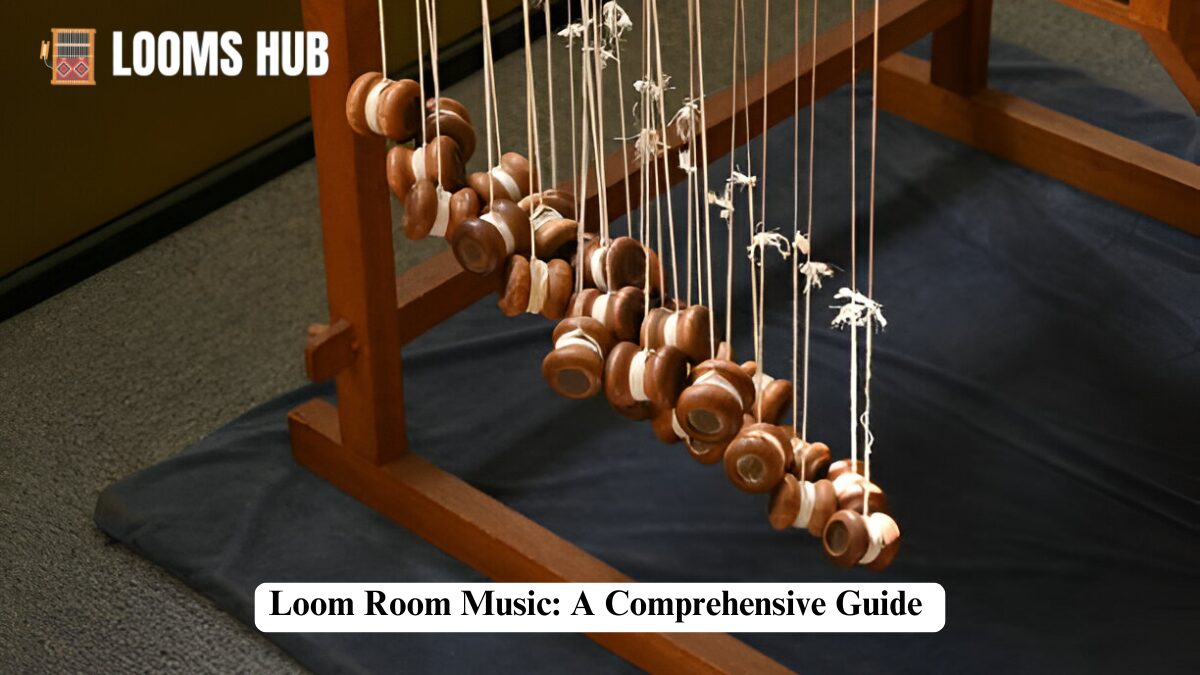Music has the power to transform spaces, evoke emotions, and enhance experiences. Loom Room Music is a concept that blends ambient, immersive, and experimental sounds to create a unique auditory environment. Whether used for relaxation, creativity, or therapeutic purposes, it has gained popularity among artists, designers, and wellness practitioners. This guide explores the origins, techniques, equipment, and applications of Loom Room Music.
Understanding Loom Room Music
Definition and Concept
- Loom Room Music is an immersive audio experience designed to transform an environment.
- It combines ambient, electronic, and organic sounds to create a cohesive atmosphere.
The Origins of Loom Room Music
- Rooted in experimental and ambient music traditions.
- Influences from artists like Brian Eno, Steve Roach, and Max Richter.
Why It Matters
- Enhances mood, focus, and creativity.
- Used in meditation, therapy, and productivity spaces.
Key Elements of Loom Room Music
Sound Design Principles
- Layering textures to build depth.
- Use of reverb and delay for spatial effects.
Instruments and Sound Sources
- Analog and digital synthesizers.
- Field recordings and natural sounds.
Rhythm and Tempo Considerations
- Generally slow-tempo or beatless compositions.
- Loops and drones to create hypnotic effects.
The Role of Acoustics in Loom Room Music
Sound Reflection and Absorption
- Soft surfaces like carpets and drapes help diffuse sound.
- Wood and stone surfaces provide natural reverb.
Speaker Placement for Immersion
- Surround sound setups create a spatial experience.
- Positioning near corners and reflective surfaces enhances depth.
Optimizing Room Size and Shape
- Square rooms may cause sound reflections that need correction.
- Larger rooms allow for better diffusion of sound waves.
Creating a Loom Room Music Setup
Choosing the Right Equipment
- Studio monitors vs. consumer speakers.
- Importance of high-quality audio interfaces.
Software and DAWs for Production
- Popular choices: Ableton Live, Logic Pro, FL Studio.
- Use of granular synthesis and reverb plugins.
Integrating Analog and Digital Elements
- Blending hardware synths with digital effects.
- Incorporating real-world recordings for authenticity.
Genres and Styles in Loom Room Music
Ambient and Drone Music
- Continuous, evolving textures with minimal rhythmic elements.
- Focus on atmospheric layering.
Experimental and Avant-Garde Approaches
- Use of unconventional time signatures.
- Integration of spoken word and field recordings.
Therapeutic and Meditation Music
- Sounds based on binaural beats and isochronic tones.
- Use of nature-inspired soundscapes.
Applications of Loom Room Music
Enhancing Creativity and Productivity
- Background music for writing, coding, and designing.
- Helps maintain flow states.
Wellness and Therapy
- Used in yoga studios, spas, and therapy sessions.
- Helps with stress relief and emotional regulation.
Gaming and Virtual Reality Integration
- Adaptive soundscapes in VR meditation apps.
- Enhancing immersion in video games.
Case Studies: Real-World Use of Loom Room Music
Case Study 1: Ambient Music in Workspaces
- Tech companies integrating low-frequency ambient loops to boost focus.
Case Study 2: Loom Room Music in Wellness Centers
- Spas using customized soundscapes for relaxation treatments.
Case Study 3: Music Therapy Sessions
- Therapists using personalized audio frequencies for healing.
Challenges in Loom Room Music Production
Balancing Complexity and Simplicity
- Avoiding overcrowding soundscapes.
- Maintaining a balance between harmony and dissonance.
Technical Limitations and Workarounds
- Hardware constraints and latency issues in live performance.
- Solutions using low-latency interfaces and optimized software.
Keeping Listeners Engaged
- Strategies like gradual evolution in compositions.
- Incorporating dynamic sound elements.
Future Trends in Loom Room Music
AI and Machine Learning in Music Creation
- AI-driven tools like AIVA and OpenAI’s Jukebox.
- Generative soundscapes adapting to user preferences.
Spatial Audio and 3D Sound
- Growth of Dolby Atmos and binaural audio experiences.
- Enhancing immersion in VR and AR applications.
Sustainability in Sound Design
- Eco-conscious studios using solar-powered synths.
- Adoption of sustainable production methods.
Conclusion
Loom Room Music is a transformative auditory experience that blends ambient textures, experimental elements, and immersive acoustics. Whether used for relaxation, productivity, or therapy, its impact on mood and environment is profound. By understanding its core principles and experimenting with techniques, anyone can create their own Loom Room Music and elevate their sonic environment.
FAQs
What is the purpose of Loom Room Music?
It creates immersive environments that enhance mood, focus, and relaxation.
Can I create Loom Room Music without expensive equipment?
Yes! Many artists use free DAWs and mobile apps to produce quality soundscapes.
What’s the best way to experience Loom Room Music?
Listening with noise-canceling headphones or a surround sound setup enhances immersion.
Does Loom Room Music have health benefits?
Yes, studies suggest it helps with stress reduction, mindfulness, and cognitive function.
How do I start producing Loom Room Music?
Begin with simple synth pads, reverb, and natural sound recordings.
Can I use Loom Room Music for sleep?
Absolutely! Many sleep apps feature customized Loom Room-style ambient tracks.
What’s the difference between Loom Room Music and traditional ambient music?
Loom Room Music focuses on spatial design and interactivity.
How do I balance frequencies in my Loom Room setup?
Using EQ and spectral analysis tools helps achieve a harmonious mix.
Where can I find free Loom Room Music?
Platforms like SoundCloud, Bandcamp, and YouTube offer free immersive soundscapes.
Is there a community for Loom Room Music enthusiasts?
Yes! Online forums, Discord groups, and Reddit communities discuss techniques and share creations.



